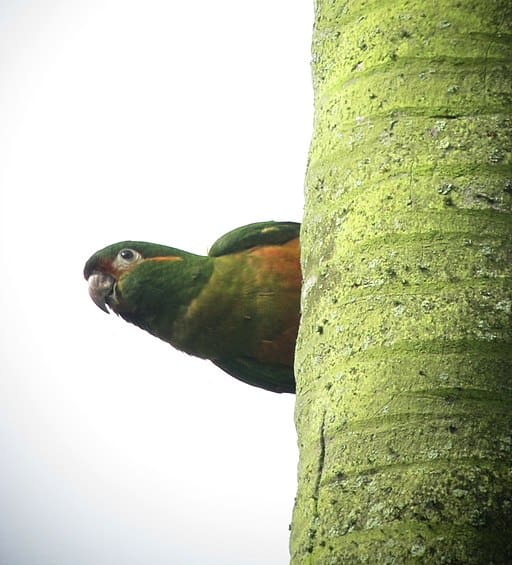The Golden-plumed Conure (Leptopsittaca branickii) is affected by the loss and degradation of up to 90% of its habitat in Colombia.
The World Parrot Trust supported the work of the Parrots in Peril team in the early 1990s to study the distribution, status and ecology of these threatened conures. The World Parrot Trust supported research to determine that Podocarpus National Park is a key site for the conservation of three endangered species, assess the effectiveness of the park as a protected area by studying threats to its integrity (ie: gold mining) and gather basic biological information pertinent to the conservation of the parrots
The Parrots in Peril team learned that the range for these species is wider than previously thought. This critical work also underlined the importance of Podocarpus National Park for all of the threatened species, the Golden-plumed Conure, the White-breasted Conure (Pyrrhura albipectus), and the Red-faced Parrot (Hapalopsittaca pyrrhops).
Status: IUCN Least Concern / CITES Appendix II
Population: 11,000-30,000 individuals, decreasing.
Threats: This species is affected by habitat loss and degradation, which has been considerable throughout its range with 90-93% of mountain forest lost in Colombia; less in Peru. Throughout its range it has slowed in recent years.
Range: Scattered throughout patchy ranges in the Andes highlands of all three ranges in Colombia; also Ecuador to southern Peru.
Natural history: The Golden-plumed Conure is found from 2400-3400 m (7872-11,152 ft) in temperate forest, elfin woodland, cloud forest and treeline shrubbery. Birds feed on Podocarpus cone seeds, other seeds, Ficus and maize. They are generally seen in noisy and conspicuous flocks outside the breeding season and make daily altitudinal movements, upland, returning to lower forests to roost.

